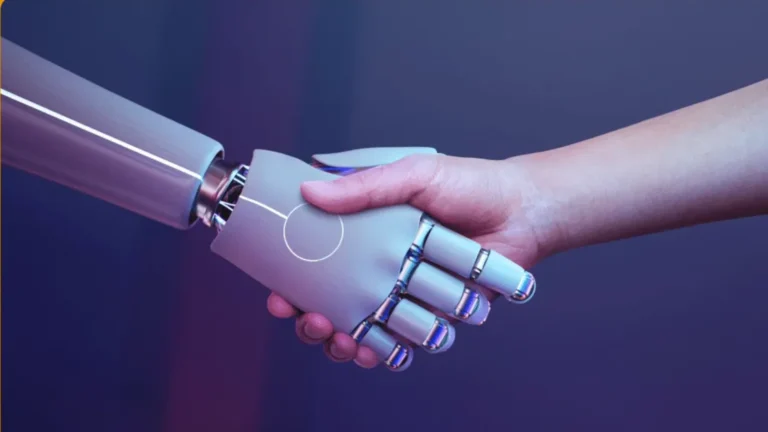Micro interactions are the small, subtle moments of engagement that enhance user experiences in digital products. As we move toward 2025, these interactions will evolve significantly, influenced by advancements in technology, design philosophy, and user expectations. This article delves into the anticipated trends in micro interactions over the next few years, exploring how they will shape user experience (UX) and interface design.
ALSO READ: Esplora Il Museo Ebraico Di Torino: Storia E Cultura Uniche
Understanding Micro Interactions
What Are Micro Interactions?
Micro interactions are the tiny, often unnoticed interactions that occur when users engage with a product or service. They include actions such as:
- Button animations when pressed
- Notification alerts that provide feedback
- Loading indicators that inform users of ongoing processes
These interactions are critical as they help communicate system status, provide feedback, and enhance user satisfaction.
The Importance of Micro Interactions
Micro interactions serve several vital functions in user experience:
- Feedback: They provide immediate responses to user actions.
- Context: They help users understand their current state in a process.
- Engagement: They can make interactions more enjoyable and memorable.
- Guidance: They assist users in navigating complex tasks or systems.
Trends Influencing Micro Interactions In 2025
As we look to the future, several trends are set to reshape micro interactions.
Enhanced Personalization
Customization at Scale
In 2025, we can expect micro interactions to become increasingly personalized. With advancements in artificial intelligence (AI) and machine learning, products will adapt to user preferences in real time. This means that micro interactions will not only respond to user actions but also anticipate needs based on past behavior. For example, a notification might adapt its tone or style based on user sentiment analysis.
User-Centric Design
Personalization will also involve more user-centric design approaches. Designers will increasingly focus on creating micro interactions that resonate with specific user segments, leading to enhanced satisfaction and loyalty.
Integration of Voice and Gesture
Voice-Activated Interactions
With the rise of voice-activated technologies, micro interactions will likely incorporate voice commands more seamlessly. Users will engage with applications and devices using their voices, and micro interactions will provide auditory feedback. For instance, a smart assistant might confirm a command with a simple “Done!” or provide additional information based on the user’s request.
Gesture-Based Controls
Similarly, gesture recognition will transform how users interact with technology. Micro interactions will respond to physical gestures, such as swipes or hand movements, making the user experience more intuitive and immersive. This trend will be especially pronounced in augmented reality (AR) and virtual reality (VR) environments.
Visual and Emotional Design
Aesthetic Appeal
Micro interactions will increasingly emphasize visual aesthetics. Animations and transitions will become more sophisticated, adding a layer of visual delight to user experiences. Subtle changes in color, shape, and motion will enhance engagement and emotional connection with the product.
Emotional Feedback
Beyond visual elements, micro interactions will also leverage emotional design. Interfaces will respond to user emotions through tailored animations or colors, creating a more empathetic user experience. For example, if a user seems frustrated, a micro interaction might change its tone to be more encouraging or soothing.
Contextual Awareness
Adaptive Interactions
As devices become smarter and more interconnected, micro interactions will become more context-aware. They will adapt based on environmental factors such as location, time of day, and even user mood. For instance, a navigation app might adjust its interface and micro interactions based on whether the user is driving or walking.
Predictive Engagement
Predictive analytics will play a crucial role in how micro interactions evolve. By analyzing user behavior and context, systems will be able to anticipate user needs and trigger appropriate micro interactions. This proactive approach can enhance user experience significantly.
Integration Of Augmented Reality (AR) And Virtual Reality (VR)
Immersive Experiences
The growth of AR and VR technologies will lead to new types of micro interactions. Users will engage with virtual objects and environments, requiring innovative interaction models. Micro interactions in AR might involve real-time feedback on user movements, while VR could utilize haptic feedback to create a more immersive experience.
New Interaction Paradigms
As users interact with digital content in three-dimensional spaces, traditional micro interaction patterns will shift. Designers will need to explore new paradigms for navigation, feedback, and user engagement in these immersive environments.
Best Practices For Implementing Future Micro Interactions
Focus on User-Centric Design
Always keep the user at the center of your design process. Conduct user research to understand preferences and behaviors, and create micro interactions that resonate with your audience.
Embrace Iteration
The design of micro interactions should be iterative. Test different designs and gather user feedback to refine your approach continually. This agile methodology ensures that micro interactions remain relevant and effective.
Leverage Technology Wisely
Stay informed about emerging technologies and tools that can enhance your micro interactions. Whether it’s AI, AR, or voice recognition, integrating these technologies can elevate the user experience.
Prioritize Performance
Micro interactions should be seamless and unobtrusive. Optimize animations and feedback to ensure they enhance, rather than hinder, the user experience.
Measure Impact
Use analytics to assess the effectiveness of your micro interactions. Track user engagement, satisfaction, and behavior to understand what works and what needs improvement.
Conclusion
As we look toward 2025, micro interactions will play an increasingly vital role in shaping user experiences across digital platforms. With trends such as enhanced personalization, voice and gesture integration, emotional design, contextual awareness, and immersive technologies, the future of micro interactions promises to be dynamic and engaging. By embracing these trends and implementing best practices, designers and developers can create meaningful interactions that resonate with users and enhance their overall experience.
ALSO READ: CS ServiceCenterVIP: Elevate Your Support
FAQs
What is a micro interaction?
A micro interaction refers to the small, often subtle moments of user engagement that occur during interaction with a product, such as button animations or notification alerts. They enhance the user experience by providing feedback and guidance.
How can micro interactions improve user experience?
Micro interactions enhance user experience by providing immediate feedback, context, and engagement, making interactions more intuitive and enjoyable.
Why is personalization important in micro interactions?
Personalization in micro interactions allows systems to tailor responses based on user preferences and behaviors, leading to greater satisfaction and loyalty.
How will AR and VR impact micro interactions?
AR and VR technologies will introduce new forms of micro interactions that involve immersive experiences, requiring innovative design approaches for navigation and feedback.
What are some best practices for designing micro interactions?
Best practices include focusing on user-centric design, embracing iteration, leveraging technology wisely, prioritizing performance, and measuring impact through analytics.

